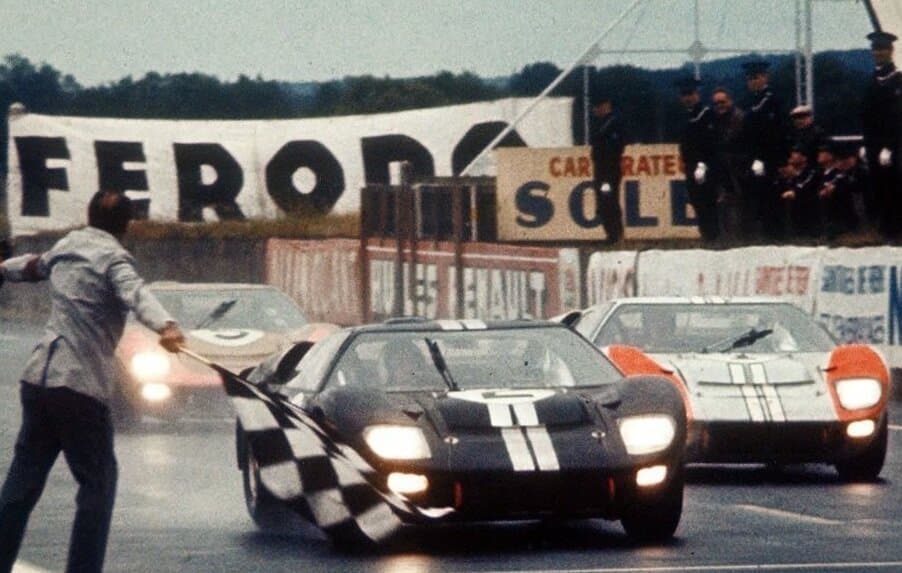
Have you seen Ford v. Ferrari?
I recently did. And I’m fascinated by the movie’s story of Ford’s quest to beat Ferrari in competitive racing in the 1960s.
Let’s face it, Ford wasn’t at all synonymous with flashy sports cars in that era. They made reliable, sturdy, sensible family cars. They were the farthest from motorsports. But they wanted to change that.
And they pulled it off. In 1966 Ford took all three podium spots and ousted the long-favored Ferrari from the winner’s position.
How they did it offers us important fundraising lessons:
1. Just because you’ve always done it doesn’t mean you should keep doing it.
For Ford to pivot to the motorsports world, the company had to think differently about how it built and designed cars. Even on the general retail side, Ford was losing market shares and getting crushed by Chevrolet. “Business as usual” was no longer working.
Designing a racing car required a completely different design, which meant literally shedding parts of the car that weighed it down and hindered its speed. The GT40 had to be a completely new design.
Which fundraising practices are holding you back from growing revenue?
Perhaps it’s that annual gala your board insists on doing, which doesn’t actually raise net revenue.
Maybe it’s leadership’s discomfort with sending out an appeal “more than once a year.”
Think critically about what holds you back from fundraising growth. Either get rid of it or redesign it to make it a catalyst.
2. Iterate and test. Always.
Once Ford decided to commit to the sport and to beating Ferrari, it went through a long iteration and testing phase.
Designing a car for speed is one thing. But designing a car to win a race like Le Mans is quite another. Test drive after test drive helped them know what needed to change in design to make the car faster.
Test drives helped them learn the farthest limit they could push the car. And testing revealed potential hazards to avoid in the next iteration.
Same in fundraising. Not all your appeals and communications will resonate the same way with your donors.
If your fundraising is a “one size fits all” approach, consider strategic segmentation, creating opportunities for donor input, and testing your messaging and tactics. Each of these can inform the right fundraising strategies that work best for your different audiences.
3. Get the right people on your team.
Ford executives knew they weren’t motorsports experts. But they knew who to go to for expertise.
Bringing on Carroll Shelby and Ken Miles, who both had successful racing cars, was necessary to success. Not only could Ken and Carroll feel where a car was dragging, they were incredibly talented and intrepid drivers. Their style and personalities clashed with Ford management culture, but it was their expertise Ford needed – and that ultimately took them to win Le Mans, the most grueling race, four years in a row.
Jim Collins writes about this in Good to Great: “Get the right people on the bus and in the right seats.”
Many roles on a fundraising team are required for success. Not all of them are front-line. But every individual on the team has to be committed to creating a culture of giving within the organization and donor love with the audience.
Same with your board. Not every board member is going to be comfortable asking for money. That’s ok. There are plenty of other ways they can be part of donor engagement and lead a culture of gratitude. The trick as nonprofit leaders is recognizing and bringing together the right combination of skills, personalities, and experience to set yourself up for fundraising success.
Fundraising is more competitive than ever. With 1.4 million non-profits in the US alone, the race for charitable dollars is real.
So – How do you make your fundraising like Ford in 1966?
Be aware and honest about what’s not working and where your fundraising is stuck.
Be brave enough to test and try new approaches.
And rally the right number and best qualified volunteers and staff to set you up for growth.
Here’s to making your organization’s year 2020 a Ford ’66!
